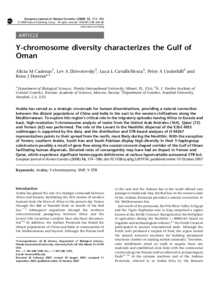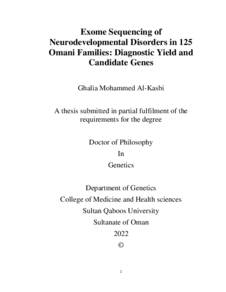Document
Y-chromosome diversity characterizes the Gulf of Oman.
Identifier
DOI: 10.1038/sj.ejhg.5201934
Source
European Journal of Human Genetics. V. 16, 3, P. 374-386
Contributors
Zhivotovsky, Lev A., Author
Cavalli-Sforza, Luca L., Author
Underhill, Peter A., Author
Herrera, Rene J., Author
Country
United States.
City
New York
Publisher
Nature Publishing Group.
Gregorian
2008-03-01
Language
English
Subject
English abstract
Arabia has served as a strategic crossroads for human disseminations, providing a natural connection between the distant populations of China and India in the east to the western civilizations along the Mediterranean. To explore this region's critical role in the migratory episodes leaving Africa to Eurasia and back, high-resolution Y-chromosome analysis of males from the United Arab Emirates (164), Qatar (72) and Yemen (62) was performed. The role of the Levant in the Neolithic dispersal of the E3b1-M35 sublineages is supported by the data, and the distribution and STR-based analyses of J1-M267 representatives points to their spread from the north, most likely during the Neolithic. With the exception of Yemen, southern Arabia, South Iran and South Pakistan display high diversity in their Y-haplogroup substructure possibly a result of gene flow along the coastal crescent-shaped corridor of the Gulf of Oman facilitating human dispersals. Elevated rates of consanguinity may have had an impact in Yemen and Qatar, which experience significant heterozygote deficiencies at various hypervariable autosomal STR loci.
Description
European Journal of Human Genetics
Volume 16, Issue 3, March 2008, Pages 374-386
Volume 16, Issue 3, March 2008, Pages 374-386
ISSN
1018-4813
Resource URL
Category
Journal articles


